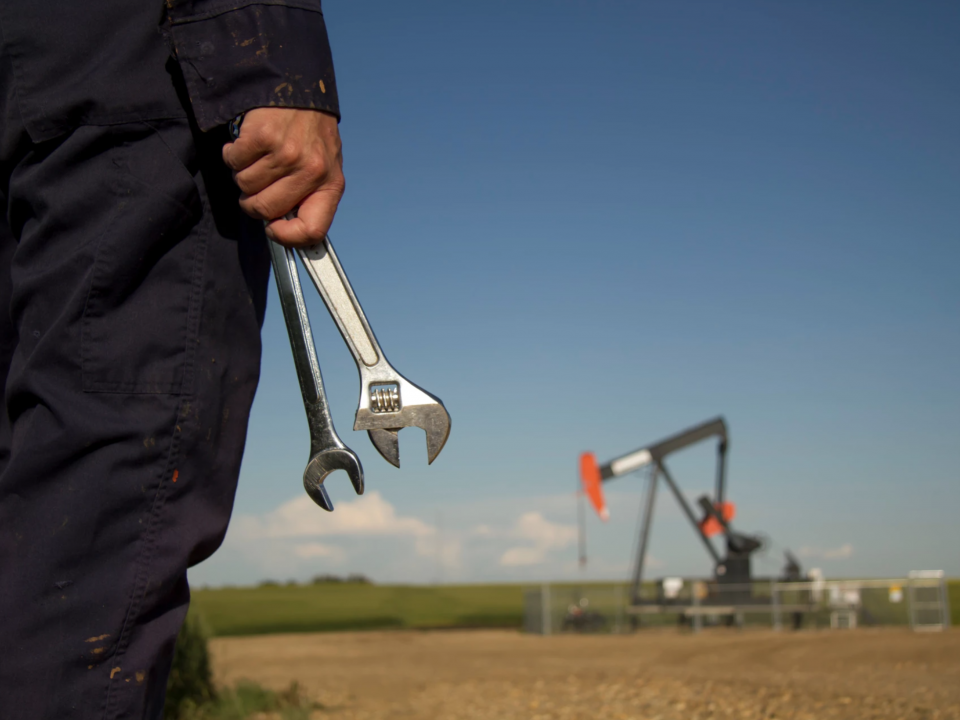PROVEN WAYS IT HAS DRIVEN OPERATIONAL EXCELLENCE THROUGH DATA
According to Chris Niven, IDC Energy Insights Research Director, “Oil and gas companies are faced with intense pressure to deal with low oil prices. Now is a good time to tighten the belt and focus on becoming more efficient and operate smarter. The companies that will survive and prosper are the ones that know how to leverage enabling technologies like cloud and mobility to help automate and optimize processes and apply analytics to improve operations output. If a company does not have operations excellence, they need to get it.”
A big reason E&P companies find it difficult to compete in a downturn is inconsistent data quality that results in substandard decision making throughout an organization from production, capex and opex. Examples include disparate and outdated spreadsheets from numerous reporting systems and the inability for all personnel to view and analyze the same data. It takes weeks to organize the data and when they finally put it in a report, it’s outdated and not in an easy-to-digest format that would allow operations to properly analyze and act upon it. Without all divisions of the workforce having near real time data access, they’re unable to communicate and collaborate to make fast, actionable data driven decisions that focus on production trends and downtime to improve operational effectiveness. By analyzing downtime across multiple dimensions, managers are able to visualize the most significant downtime reasons and implement different operation methods and design. “We have reduced downtime by 50%. We used to be at about 5% companywide downtime and we have cut it in half in terms of % of production loss.” – Production Manager from Leading E&P Company.
Why the lack of operational efficiency in the Oil and Gas Industry?
Back in the boom times, E&P companies didn’t have to really dig into the data and scrutinize the numbers. They were growing rapidly and purchased different technology systems for each department and function just to keep up with the expansion and prosperous periods. These systems were bought for production volume, accounting, budgeting and reserve estimates. As the data started rolling in, companies had to dedicate an army of analysts to dig into each siloed system and come up with potentially conflicting insights. This left operations with siloed guesswork, reports and the inability for operators, engineers and managers to make knowledgeable, tailored and goal oriented decisions. An industry study from Cisco states that for oil and gas firms to operate efficiently, they must eliminate the siloed approach they have traditionally taken regarding digital technology selection and innovation.
Who has the ability to turn an organization in a down market? … The answer lies in the hands of IT!
IT is in the unique position to pull the company through this economic downturn. With every aspect of an oil and gas company – drilling and completions, economics, production field data capture – revolving around data, data has become the new oil. By implementing built for purpose oil and gas specific master data management systems, the IT department is able to bridge the divide between siloed systems and enterprise solutions that feature mobility and big data. Imagine giving your lease operator the power to record volume information and well parameters with a simple device such as an iPad or Windows tablet and then they have the ability to view what the theoretical production should be and have a real-time view on their potential performance gap. Operations can then use these reliable and unified reports to pinpoint errors and perform on-the-fly well reviews. They will also be able to strategically cut costs on anything from administration and invoice errors to overspends on a per-asset, per-division level. “Post deployment of the LOS Solution, we caught a few overcharges that we wouldn’t have caught if we didn’t have the dashboards. It resulted in about $40K of invoices credited back to us.” – Joseph Jones, Production Engineer at Concho Resources.
Efficient implemented solutions led by the CIO add maximum value with the least amount of technology. Operations will be able to strategically cut costs on anything from administration and invoice errors to overspends on a per-asset, per-division level. They take action and optimize cost performance by reducing cost between to 2-8% per quarter and 12% over the course of a year. With Seven Lakes’ analytics solutions, they drill down to the invoice level, easily access snapshots at different levels in hierarchy for a LOE, profitability and G&A; and monitor well watch-lists that identify top or bottom wells based on margin, lifting cost and expenses.
3 Ways to Take Reporting to a New Level in Today’s Digital Oil Field
1) Choose software that can work with all systems. Companies have spent millions of dollars implementing enterprise systems. However, these systems don’t speak with each other and companies aren’t receiving value out of their investments. Invest in software that delivers consistent, trustable data and insights across an entire organization, from corporate to the field which allows you to boost production and optimize capital and operational expenditures. “Part of being able to reduce our capex and come 5% under our original capex guidance definitely comes from being able to gain better insights into our AFEs via the AFE Dashboard” – CIO, at leading E&P company in the Williston Basin.
2) Invest in intelligence, not just data. There are several analytics toolkits that promise a solution you can build in-house but this implementation could take months and require on premise resources. Choose systems that are already built and give your stakeholders and field a solution today. Expect advance analytics that include readymade business data models that map to your business. Don’t be confined to a predetermined set of reports that don’t allow filters to meet the requirements of a changing environment. “One of the biggest advantages overall for our office and field guys is the ability to go into our LOS solution and drill down to the actual invoice behind the expenses.” – Production Engineer, Large Permian Basin Operator.
3) Make mobile a mandate. Think from the ground up. Operational excellence does not happen behind a desk, it begins with your lease operator out in the field. Give them the ability to instantly log their findings into a reliable tool such as an iPad or Windows tablet. Don’t make them jot it down on a grease sheet and then ask them to drive back to the field office to input their data into a system. Give them more time to work on maintaining their wells and less time driving to and from the office. A large private independent E&P company in the Eagle Ford shale, uses 20 Ford F-150s, by using field data gathering application, they saw a 20% reduction in “data entry” mileage (40 miles per truck per day). In the Eagle Ford shale alone, they saved $150,000/year in vehicle mileage/maintenance costs (assuming $0.54/mile vehicle mileage/maintenance cost per the IRS). Companywide this is an approximate $600K annual opex savings!
Reduction in OPEX is Achievable
Accuracy, speed and transparency is the name of the game with well cost management today. From COOs and CFOs right down to the on-site well engineers, the entire delivery chain needs to see very detailed cost level data, sometimes even to the invoice level. When organizations are able to achieve this level of insight into costs, they are able to make intelligent decisions and enforce sound accounting procedures. The detailed view of organizational costs provided by Seven Lakes is regularly cited as a key contributor to significant reductions in operating expenditures for fast-growing companies. The time is now for IT to take the next step and calculate how you can minimize operational expenditures.
To learn more about the solutions commented on by leading Oil and Gas professionals, please contact lucy@jointhefeed.com.




